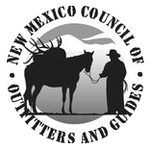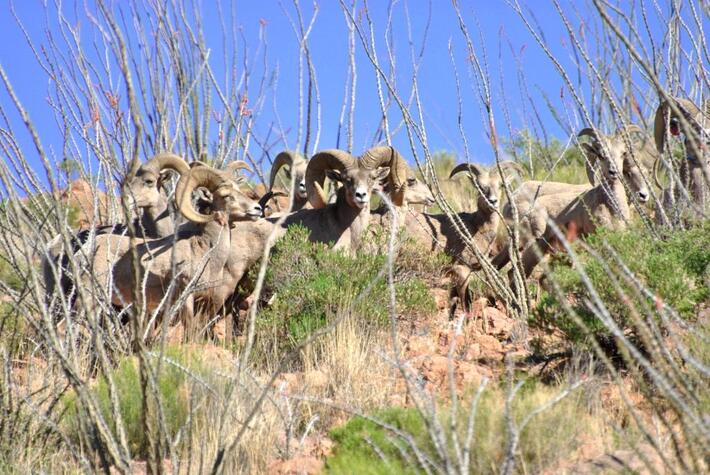Archives
April 2024
|
Back to Blog
August Commission Re-cap8/23/2022 The NM State Game Commission hosted a two-day meeting on August 19-20. Lots of ground was covered during the meeting so let’s jump right in… DIRECTOR’S REPORT - HUNTS ON FS LANDS IN BURN SCAR AREAS Director Sloane provided the Commission with an update on the NMDGF meetings with the Forest Service to ensure the areas of the Carson, Santa Fe, and Gila National Forests that were closed due to wildfire are re-opened in time for elk hunts. This will ensure that hunters who drew permits in the burn scar areas will be able to access the public forest land in those GMU’s. The Forest Service is working to open most areas by Sept. 1st. There are some areas of the Santa Fe which were heavily impacted by the Calf Canyon/Hermits Peak fire which will remain closed for the foreseeable future (i.e Pecos Canyon & the Serpent Lake trail and surrounding area). However, the NMDGF & Forest Service are working hard to ensure that elk hunters will not be negatively impacted by the closures. The one potential caveat to a Sept. 1st re-opening plan is the possibility for dangerous monsoonal flooding in the burn scar areas. Hopefully this will not occur, but the Dept. will communicate with draw hunters in the event of significant limitations to hunter access in the forest. 30 X 30 INITIATIVE DISCUSSION Sarah Cottrell Propst, Secretary of the NM Energy, Minerals, and Natural Resources Department, provided the Commission with an update regarding NM’s 30 x 30 Initiative (part of the federal America the Beautiful Initiative). The NM initiative is an executive order that requires at least 30% of NM’s land be considered “conserved” by the year 2030 with an additional 20% designated as “climate stabilization” areas for the purpose of combatting climate change. The NMDGF along with several other state agencies are participating in a collaborative advisory committee to inform the Governor regarding the progress and general direction towards obtaining NM’s 30x30 goals. Unsurprisingly, the advisory team does not yet have a definition for the term “conserved” however “climate stabilization area” is defined as intact or semi-intact lands that store a relatively large amount of carbon. NM’s 30x30 core principles include:
The advisory committee is beginning their public feedback process by conducting a preliminary survey which we encourage you to access by clicking HERE (hurry because the deadline to take the survey is 8/25/22). The committee will issue their first Annual Report to the Governor in December 2022. REPEAL OF THE NON-NAVIGABLE WATER RULE The Commission approved a complete repeal of the Landowner Certification of Non-Navigable Water Rule. NMCOG did not oppose the repeal. This is what the NM Supreme Court ordered in their March 1st ruling. What NMCOG does oppose is the NMDGF’s overly broad interpretation as it relates to how the NM Supreme Court ruling applies to public recreational access to waters located on private land. The NMDGF printed in their 2022 Fishing Proclamation “By means of this court order, all watercourses in the state, that can be legally accessed, are open for public recreational use.” The NMDGF additionally provided NMCOG with written clarification of their current stream trespass enforcement policy which stated: “As long as you legally access the stream, and stay within the free-flowing water of the streambed (the wetted portion of the stream), then you can access the stream for water recreational use (fishing, floating, swimming, etc.)” NMCOG feels that these policies are an egregious misinterpretation of the March 1st NM Supreme Court ruling. The ruling directed that the Non-Navigable Waters Rule be repealed however the court DID NOT repeal the statute which specifically outlaws walking and wading on private property to access water for recreational purposes. The statute reads: “No person engaged in hunting, fishing, trapping, camping, hiking, sightseeing, the operation of watercraft or any other recreational use shall walk or wade onto private property through non-navigable public water or access public water via private property unless the private property owner or lessee or person in control of private lands has expressly consented in writing. (Section C., Chapter 17-4-6 NMSA 1978).” In NM the streambed of any waterway on private land (with or without flowing water) is unarguably owned by the private landowner. They pay taxes on that land. The legal description of the streambed is included in their property deed and the value of the streambed is included in the real estate value of their property. This ownership structure has been in existence since New Mexico became a state in 1912. Private property owners have rights and landowners should not be forced to accept unlimited and uncontrolled numbers of trespassers just because their property includes a streambed. Without a NM Supreme Court written decision stating otherwise, trespass on private property, including in privately owned streambeds, is still 100% illegal. NMCOG feels strongly that the NMDGF and the Game Commission are adding to the public’s confusion regarding this issue and this confusion is leading to dangerous conflicts between unsuspecting anglers and landowners desperate to protect the investments on their private property. SUBSEQUENT DISCUSSION OF THE DEER RULE The NMDGF is currently revising the Deer Rule for the next 4-year cycle. The rule is currently open for public comment but will be closing very soon. Below is an updated list of the proposed changes to the deer rule. The rule will be officially approved at the October Commission meeting. Please review the changes and provide public comment ASAP via email to [email protected] PLEASE NOTE: NMCOG is not taking an official stance on the muzzleloader issue. We have a substantial number of outfitters who are strongly in favor of the change as well as many who are strongly opposed. Consensus was undetermined and therefore NMCOG will remain neutral on the issue. PROPOSED CHANGES TO DEER RULE
SUBSEQUENT DISCUSSION OF THE ELK RULE The NMDGF is currently revising the Elk Rule for the next 4-year cycle. The rule is currently open for public comment but will be closing very soon. Below is an updated list of the proposed changes to the elk rule. The rule will be officially approved at the October Commission meeting. Please review the changes and provide public comment ASAP via email to [email protected] PLEASE NOTE: NMCOG is not taking an official stance on the muzzleloader issue. We have a substantial number of outfitters who are strongly in favor of the change as well as many who are strongly opposed. Consensus was undetermined and therefore NMCOG will remain neutral on the issue. PROPOSED CHANGES TO ELK RULE
FINAL APPROVAL OF THE BIGHORN SHEEP RULE NMCOG is breathing a deep sigh of relief regarding the bighorn sheep rule. The Commission officially adopted the Dept’s proposal to maintain the current allocation process of draw permits (rather than eliminate non-resident draw opportunity as was previously proposed by resident preference groups). This means draw permits will continue to be awarded, as they have since 2015, with 84% of the total draw permits going to resident hunters and 16% to nonresidents. The rule was approved for a 2-year duration (rather than 4-year) but nonetheless, non-resident hunters have won this battle. Of course, the war is still brewing, and this issue will no doubt be debated again during the 2023 NM Legislative Session in January. But NMCOG always takes our wins where we can, and it sure feels good to bask in the glory of this temporary reprieve from the fight to preserve non-resident opportunity to hunt in New Mexico. A very big Thank You to all the resident & nonresident hunters, outfitters, and guides who provided public comment to the Commission over the past 6 months during this debate. ODDS AND ENDS During the 2-day meeting the Commission also heard presentations regarding the status of the Federal Recovering America’s Wildlife Act (RAWA) which is still pending Congressional approval, the Dept’s FY 2022 budget review and FY 2024 budget proposal, the status of SIKES Act projects (projects conducted using money generated by the habitat stamp program), a review of the origins and purpose of The North American Model of Wildlife Conservation, an update from the Wildlife Management Institute regarding the Commission’s role as a strategic partner, and a discussion of the Commission’s Mission, Vision, and Values. Next Commission Meeting – October 14, 2022 (Las Cruces, NM)
COMMISSIONER CONTACT INFORMATION (You're encouraged to contact the Commissioners any time to voice your opinion) Sharon Salazar Hickey - Chairwoman District 4: Santa Fe, Taos, Colfax, Union, Mora, Harding, Quay, San Miguel, Guadalupe and Torrance counties [email protected] Deanna Archuleta - Vice Chairwoman At - Large Position [email protected] Gregg Fulfer District 1: Curry, De Baca, Roosevelt, Chaves, Lincoln, Otero, Eddy and Lea counties [email protected] Roberta Salazar-Henry District 2: Catron, Socorro, Grant, Hidalgo, Luna, Sierra and Doña Ana counties [email protected] Tirzio Lopez Appointed - Agriculture Position [email protected] OPEN District 3: San Juan, Rio Arriba, McKinley, Sandoval, Cibola, & Valencia counties OPEN District 5: Bernalillo County
0 Comments
read more
Leave a Reply. |
51 Bogan Rd. Stanley, NM 87056
QUICK LINKS |
Contact UsSOCIAL NETWORK |
© Copyright 2023 by New Mexico Council of Outfitters and Guides, Inc

